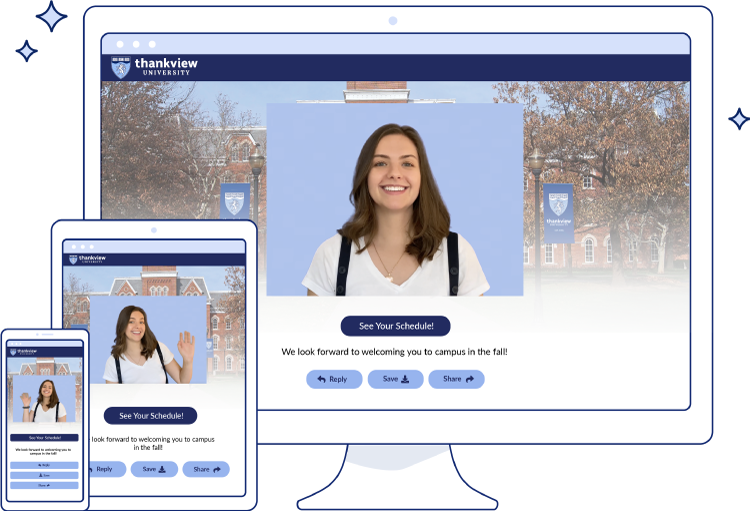How To Create an Impressive Donor Cultivation Plan
We all want to see more donations coming in for our nonprofit organizations. But finding, converting, and retaining donors is hard. Especially when everyone is stepping up their game.
How do you stand out and cultivate donors? By having a winning approach to the donor cultivation cycle.
Let’s take an in-depth look at major donor cultivation and how to create an experience that easily converts prospects into long-time supporters.
What Is Donor Cultivation?
Donor cultivation refers to everything that happens between you finding a prospect and making your first ask. It covers research, relationship building, and the preparation that happens before you convert them into a donor.
You can also use donor cultivation to refer to that same process between donations, sometimes known as donor stewardship. This often happens if someone has given once, but you want to work on converting them into a repeat donor or increase their gift size.
Donor cultivation also covers the strategies and methods you use to make this happen. That can be anything from sending a thank you video to a personal meeting with your prospective donor.
The Major Goals of Donor Cultivation

This stage of the donor cultivation cycle is so valuable. It’s where you get to know your prospect or donor, and they get to know you. Here are the key goals of donor cultivation and how to cultivate donors.
Build a Relationship
Donor cultivation is all about creating a connection between your prospect or donor and your organization so that you can transform that into a donation. To do this you’ll need to create and build a lasting relationship with them.
Relationship building is a process that happens over time, but it starts with the first small, genuine interactions. From there, you can work your magic to turn a prospect into a loyal supporter of your nonprofit.
Engage With Your Prospect
The second major goal of donor cultivation is engagement. You can’t build a relationship of trust and support with a donor if you don’t interact with them!
Your donors — especially major gift donors — don’t want to feel like just another number in a spreadsheet. That doesn’t do any favors for your relationship with them. A successful major donor cultivation approach gives you plenty of opportunities to engage with your prospects through different methods. That, in turn, creates a foundation you can use to make a future ask.
Understand Their Focus
Every donor is unique. They’ll all have different reasons for being attracted to and supporting your nonprofit organization. Use the donor cultivation process to understand their focus and drive, and where that fits in with your goals.
Survey your prospects and pay attention to how they engage with you. Identify what they’re most passionate about, then tailor your content and engagement around that. Not only does this help you focus your efforts, it’s a great way to build a stronger, more personalized connection with them.
How To Successfully Cultivate Donors

Find a prospect, make them love you, and receive donations. That’s it distilled down, but cultivating donor relationships isn’t that simple. The good news is that once you’ve nailed some of the basics, you can test and refine your process until it works perfectly.
Here’s a plan on how to successfully cultivate donors and win their loyalty.
Get To Know Your Prospect
Before the donor cultivation lifecycle even starts, you’ll first need to identify prospects. These potential donors are people you haven’t met yet or have met but not engaged with.
Use your data and conduct research to identify groups of people and potential donors that would be a great match for your nonprofit. Figure out where they spend their time and how to reach them, so you can create an effective major donor cultivation plan and template to bring them into your world.
Here’s the kind of information you want to learn about your prospects:
- Their main characteristics — including age and location
- Where they spend their time — e.g., social media channels, your website, local events
- What they’re passionate about
- How they engage with organizations — e.g., email, phone, text, blogs, video
- What level donor they’ll be — e.g., small donations, regular donations, major gifts
Knowing this information will help you decide how to approach them so that you can move on to making an authentic connection with them.
Make a Connection
Everything starts from that first interaction. Once you’ve identified prospects, it’s time to get in touch, say hello, and introduce your organization. This is where you’ll want to be clear on what you’re all about, so you can confidently and passionately let your prospects know why you’re such a great match.
Maybe your prospect has made the first move and made a small donation to you. Build a connection with them by sending a swift and heartfelt thank you letter, email, or, better yet, make a memorable impact by sending a personalized thank you video. You can even create a generic video and append short, personalized introductions to it to save you time.
Overall, get creative! This is your chance to introduce your organization and personalize their experience, so you can one day transition them into a new, repeat, or major gift donor.
Interact Regularly
You’ve made contact with your prospect or donor and they’re warming up to you. That’s great, but it isn’t time to stop just yet. Make sure you interact with them regularly so they don’t forget you exist.
There’s a whole collection of donor engagement strategies you can use here to build a stellar relationship. Here are some donor cultivation ideas:
- Send a thought-provoking email campaign
- Engage with them on social media
- Schedule a personalized call to catch up
- Mail out a customized piece of content – like a sticker or notebook
- Invite them to a fundraiser by sending a video invitation
- Send out a video update on a project they’re interested in
- Share news about a successful fundraising campaign
- Set up a video call with your team and board members
Don’t be afraid to interact with your prospects across different mediums — not only do you look super active, but it helps you figure out which types of interaction they respond best to.
Create a Community

You want to attract a whole bunch of donors to your organization, so give them somewhere to share their passion for what you do by creating communities and connections with each other.
Set up a Facebook group where your donors can hang out, or create a Slack channel where you can easily share news and interact. Schedule regular video calls, webinars, or town halls where everyone can get involved, with fun quizzes and social events, too.
Not only does this create a sense of community, but seeing how involved current donors are can encourage new donors to contribute a larger gift.
Encourage Them To Take Action
By now your prospects or donors are on board with who you are and what you do. It’s time to test the waters for that first proper ask with a request to take action.
Running a time-limited fundraising campaign? Ask them to share a promotional email with a friend or post on social media. Video is the most shareable form of content, so consider something concise to keep their attention. Hosting an event you know they’d love? Ask them to book a ticket and bring a plus one.
Tailor this engagement as much as you can, so you’re presenting an opportunity you know they’d jump at the chance to get involved with. If they don’t engage, follow up in a casual way and create another opportunity to interact. This can be as simple as sending a video update on what is going on at your organization in lieu of a traditional newsletter.
Make the Ask
You and your prospect or donor have spent a bunch of time getting to know each other. You email them regularly, they like your posts on social media, and you’ve got a few shared moments you can look back on. It’s time to make a donation request.
This is where you ask your prospect or donor to reaffirm or grow their commitment to your mission and support your organization. Think about which solicitation approach works best — would your prospect love an in-person meeting over coffee, or would they prefer a heartfelt video alongside an online donation page they can take action on right away?
Here are a few other donor cultivation ideas to help you make the ask:
- Schedule a phone call with your development director
- Meet up at a fundraising event for a private catch-up
- Send a short and sweet email, referencing your time together so far
- Post a handwritten note, letter, or video
- Connect them with those they will impact with a short video about what their donation will achieve
- Arrange a face-to-face meeting at your next event
- Surprise them with a personalized cake alongside a note
Customize this experience as much as possible and really use everything you’ve learned about your prospect along the way. The goal here is to transition your prospect into a larger donor and to retain them as a loyal supporter.
Create a Cultivation Plan at Scale
Through the donor cultivation process, you’ll get to know your prospects well. You’ll figure out when and where they like to hear from you, and how often. You’ll understand their interests, passions, and preferences. You are trying to use all that information to tailor your engagement with them, right up to that all-important ask.
However, you’re going to want to sign up more than one person at a time for this program. Don’t reinvent the wheel every time you want to build a relationship with a prospect! Instead, take everything you know and have learned and create a donor cultivation plan by tiers.
In your major donor cultivation strategy plan template, you’ll want to cover details like:
- Who your prospective donors are
- How you’ll identify and reach them
- How often you’ll interact
- Different methods — like video, direct mail, email, phone, and fundraising events
- How you’ll make that first ask
- How you’ll measure success
Using this criteria, break you donors into segments and define these ideas for each one.
This doesn’t have to be a fancy, 70-page document. In fact, it’s best if this is something that starts small and you refine over time. It takes time to ace your donor cultivation process, but once you do you’ll have a personalized playbook to help you convert prospects into recurring donors.
Hire a Dedicated Cultivation Officer
Donor cultivation can be a pretty involved process, and you want someone working on it that’s really clued up and donor-focused. Nonprofits are busy organizations, so if you can it makes sense to hire a dedicated officer to handle your donor cultivation.
With their sole focus on donor cultivation, your star hire can really put their all into it. They’ll have more time to analyze data and trends and come up with exciting ways to impress your prospects. They can also work on a donor stewardship plan to support your overall stewardship strategy. Plus, it then gives other staff members more time to focus on the areas they love best.
How To Measure Donor Cultivation Success

Once you’ve got a major donor cultivation strategy plan template or process running, you’ll want to know whether it’s working or not. Here’s how to measure the success of your cultivation cycle and spot areas for improvement.
Record Your Interactions
You can’t see which of your donor development strategies and plans are working without knowing what you’ve done. Makes sense, right? To help you do this, record all your interactions with your major donor prospects.
That sounds overwhelming, but it isn’t. You can use dedicated donor management software to help you keep track of the emails you’ve sent, phone calls you’ve made, and meetings you’ve held. You can also track donor attendance at events, whether they’ve volunteered, and whether they’ve signed up to your webinars or not.
If you’re using video as the lead channel for personalization, it’s easy to track engagement metrics like open rates, clicks, engagement scores, and more.
All this data gives you a more informed view of your relationship with a donor. You can see whether they engage with the content you share, or whether they’re disengaged and could do with more personal outreach to catch up.
Track Your Gifts
The goal of donor cultivation is to send some super useful donations your way. One of the best ways to measure the success of your process is to record the donations and the leadership or major gifts you receive over your prospect or donor’s lifetime with you.
Use your donor management software or a simple CRM system to record donations received. Capture the date, gift amount, and method of donation. Use categories so you can easily sort and filter group donations by amount and type, as these are useful ways to identify trends.
In collaboration with the data you hold on interactions, you can build a picture of which engagements led to which donations. This is valuable stuff, and can help you focus your time and resources on what truly works for that donor.
Stand Out With Your Stellar Donor Cultivation Efforts
There are so many nonprofit organizations out there these days. You want yours to stand out and be the one that your prospect feels aligned with. To do that you’ll want to create a winning donor cultivation strategy, try different methods of engagement, and personalize your donor request fully.
Create an engaging, direct ask by using ThankView to send a personalized video request. While others are sending automated emails, you’re one step ahead of them with an approach that’s not only personal but fun and unique, too! Book a demo with us today to find out how we can help you ace your donor cultivation.
